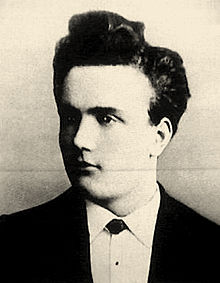Portal:Telecommunication
The Telecommunication Portal

Telecommunication, often used in its plural form, is the transmission of information with an immediacy comparable to face-to-face communication. As such, slow communications technologies like postal mail and pneumatic tubes are excluded from the definition. Many transmission media have been used for telecommunications throughout history, from smoke signals, beacons, semaphore telegraphs, signal flags, and optical heliographs to wires and empty space made to carry electromagnetic signals. These paths of transmission may be divided into communication channels for multiplexing, allowing for a single medium to transmit several concurrent communication sessions. Several methods of long-distance communication before the modern era used sounds like coded drumbeats, the blowing of horns, and whistles. Long-distance technologies invented during the 20th and 21st centuries generally use electric power, and include the telegraph, telephone, television, and radio.
Early telecommunication networks used metal wires as the medium for transmitting signals. These networks were used for telegraphy and telephony for many decades. In the first decade of the 20th century, a revolution in wireless communication began with breakthroughs including those made in radio communications by Guglielmo Marconi, who won the 1909 Nobel Prize in Physics. Other early pioneers in electrical and electronic telecommunications include co-inventors of the telegraph Charles Wheatstone and Samuel Morse, numerous inventors and developers of the telephone including Antonio Meucci and Alexander Graham Bell, inventors of radio Edwin Armstrong and Lee de Forest, as well as inventors of television like Vladimir K. Zworykin, John Logie Baird and Philo Farnsworth.
Since the 1960s, the proliferation of digital technologies has meant that voice communications have gradually been supplemented by data. The physical limitations of metallic media prompted the development of optical fibre. The Internet, a technology independent of any given medium, has provided global access to services for individual users and further reduced location and time limitations on communications. (Full article...)
Selected article -
Digital subscriber line (DSL; originally digital subscriber loop) is a family of technologies that are used to transmit digital data over telephone lines. In telecommunications marketing, the term DSL is widely understood to mean asymmetric digital subscriber line (ADSL), the most commonly installed DSL technology, for Internet access.
In ADSL, the data throughput in the upstream direction (the direction to the service provider) is lower, hence the designation of asymmetric service. In symmetric digital subscriber line (SDSL) services, the downstream and upstream data rates are equal. (Full article...)General images
Things to do
 |
Here are some tasks awaiting attention:
|
Selected biography -
Paul Julius Gottlieb Nipkow (22 August 1860 – 24 August 1940) was a German technician and inventor. He invented the Nipkow disk, which laid the foundation of television, since his disk was a fundamental component in the first televisions. Hundreds of stations experimented with television broadcasting using his disk in the 1920s and 1930s, until it was superseded by all-electronic systems in the 1940s.
Nipkow has been called the "father of television", together with other early figures of television history like Karl Ferdinand Braun. (Full article...)Did you know (auto-generated) -

- ... that one of the original co-owners of New York state radio station WAQX-FM did much of the construction himself?
- ... that WTVK in Knoxville, Tennessee, won a years-long battle to move from UHF to a VHF channel, only to be sent by new management to "that big TV station in the sky"?
- ... that a complaint over an allegedly illegal transmitter move led to Texas radio station KFQX-FM being forced off the air for four hours in 1988?
- ... that a Nebraska radio station's plans to broadcast college sports were met with "audible gasps"?
- ... that television production companies working in Bhadun, Bangladesh, can hire a local woman as an extra for ৳500 (US$5.30) per day?
- ... that a Ramadan television show featured riddles, music, choreographed dance routines and "fantastical narratives"?
Related portals
Topics
Subcategories
Associated Wikimedia
The following Wikimedia Foundation sister projects provide more on this subject:
-
Commons
Free media repository -
Wikibooks
Free textbooks and manuals -
Wikidata
Free knowledge base -
Wikinews
Free-content news -
Wikiquote
Collection of quotations -
Wikisource
Free-content library -
Wikiversity
Free learning tools -
Wiktionary
Dictionary and thesaurus




























































































